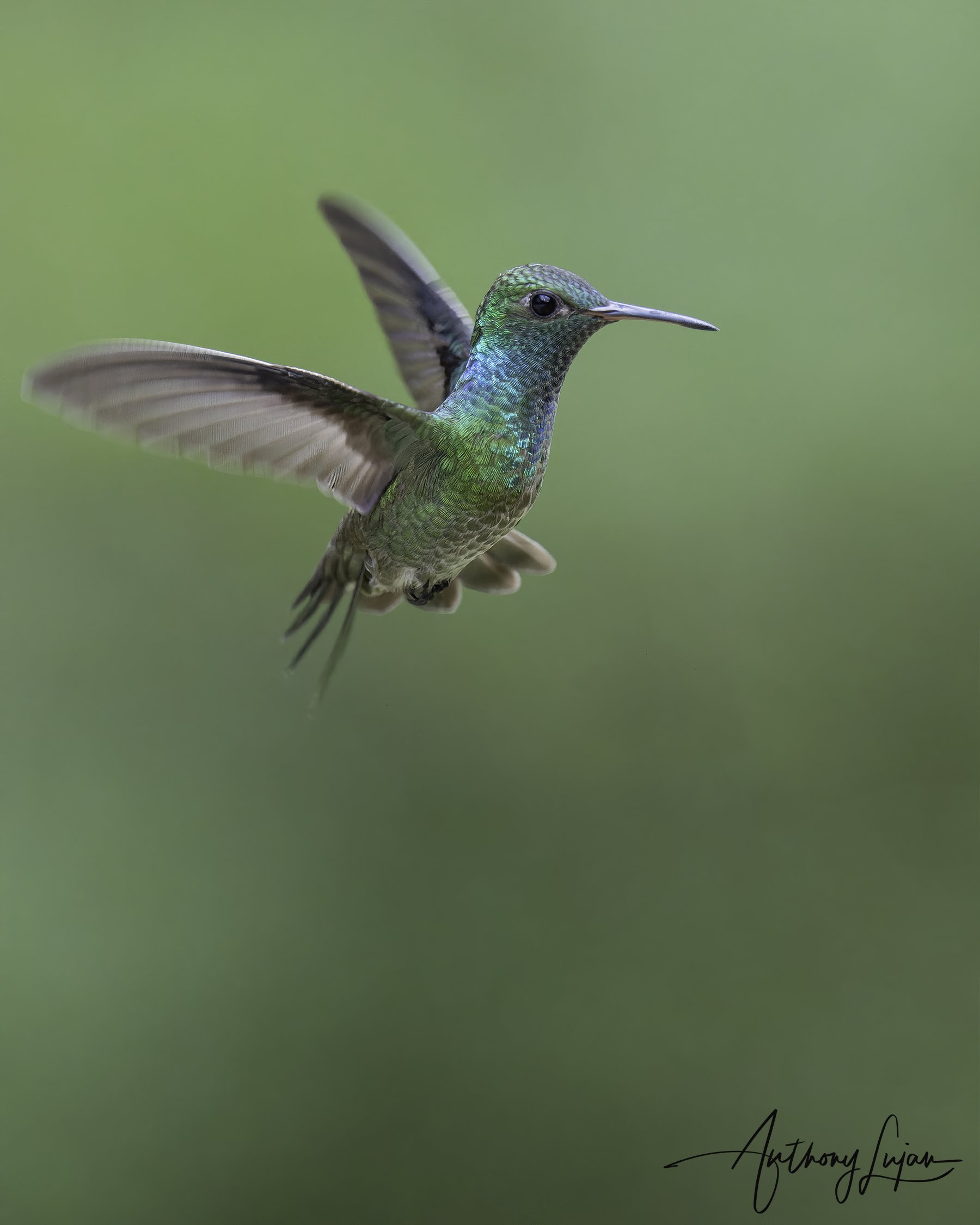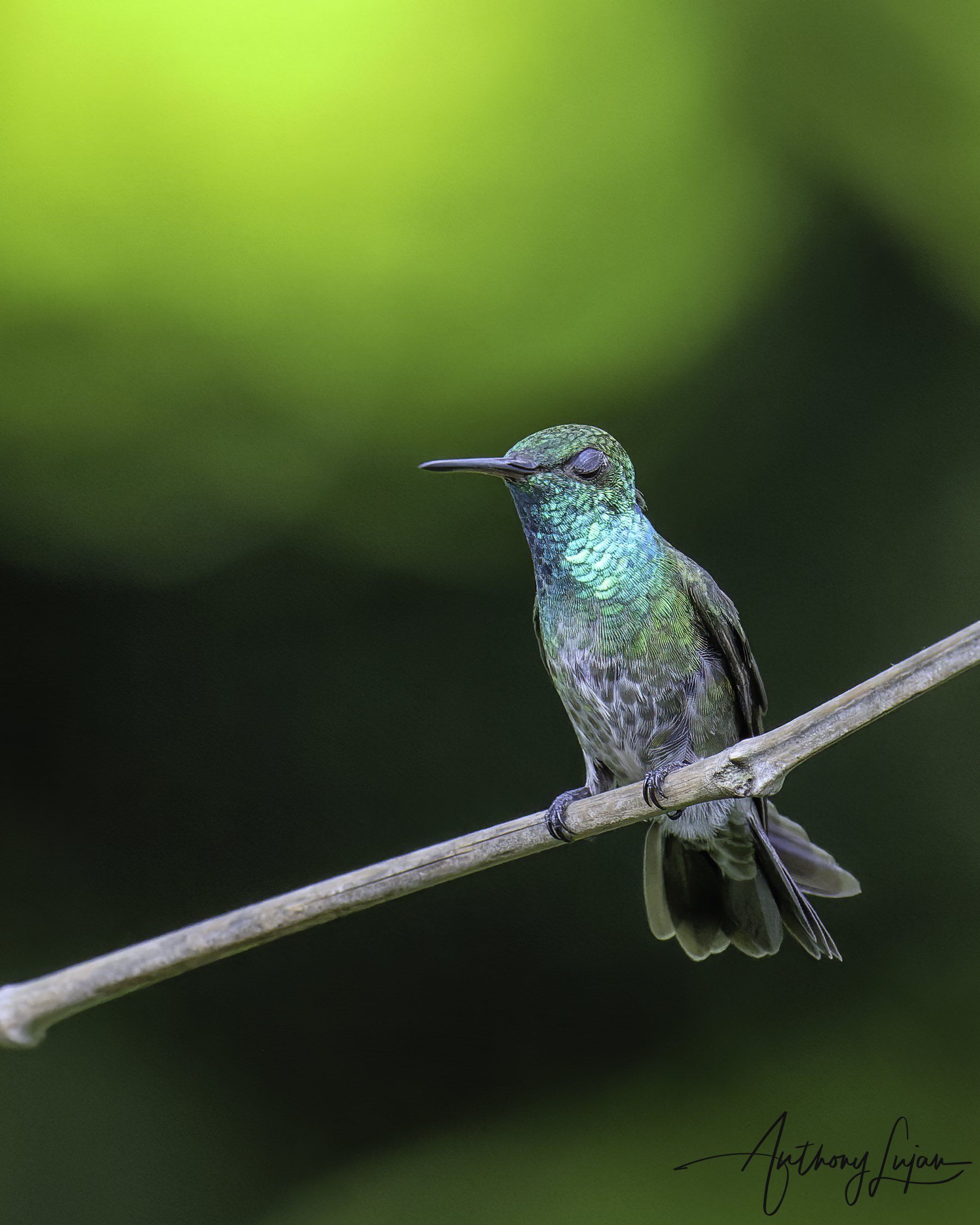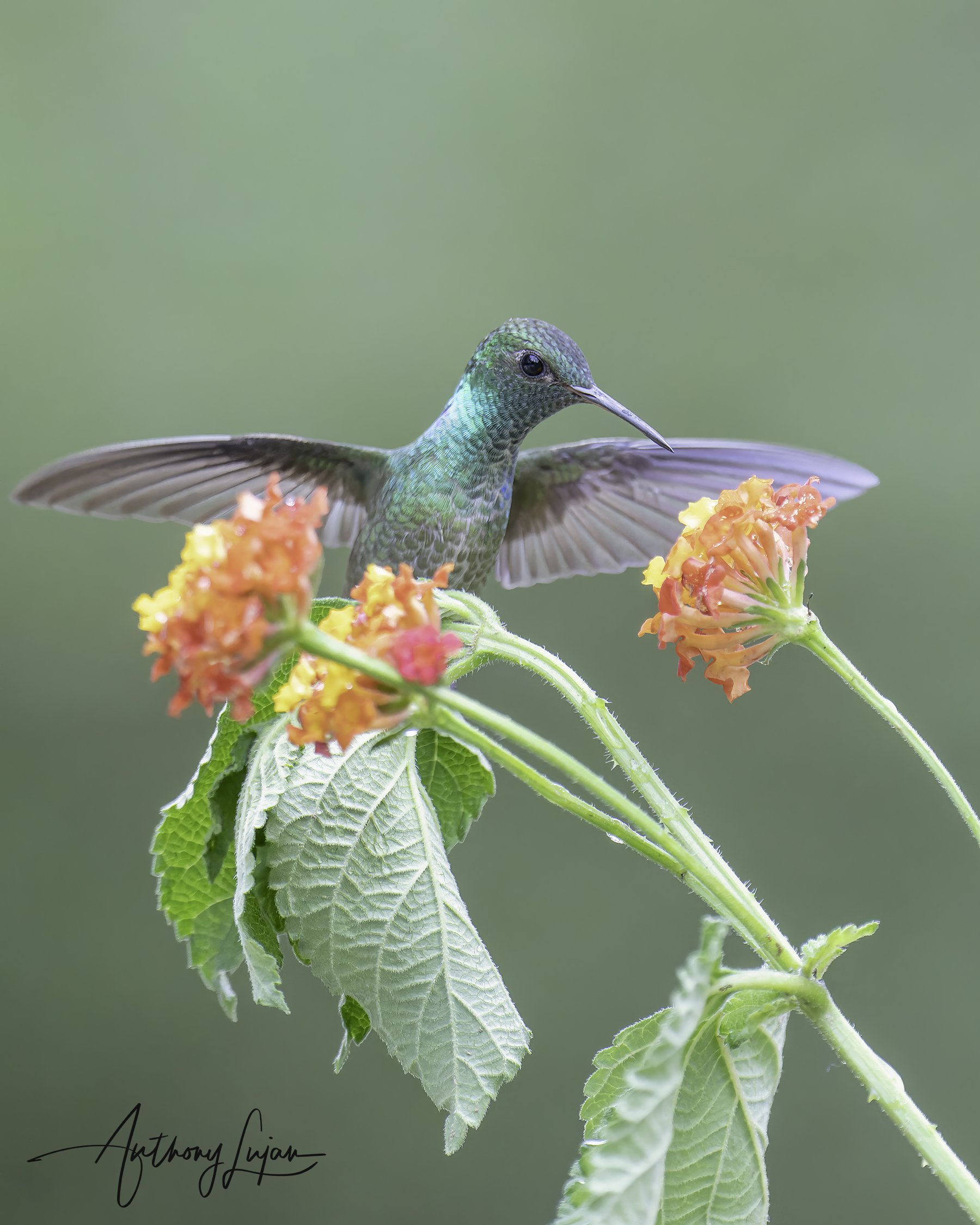Versicolored Emerald
Versicolored Emerald (Chrysuronia versicolor)
Name Origin:
The genus Chrysuronia combines Greek chrysos meaning "gold" and ouranos meaning "sky," likely referring to the metallic iridescence in several species of this genus. The species epithet versicolor means “variegated” or “of various colors,” highlighting the bird’s shifting hues in different lighting.
Quick Facts
🪶 Length: 8.5–10 cm (3.3–3.9 in)
⚖️ Weight: ~3.5–4 g (0.12–0.14 oz)
🌎 Range: Northern South America from Colombia and Venezuela to Brazil, Bolivia, Paraguay, and northern Argentina
🧭 Elevation: Sea level to 1,500 m (4,900 ft)
🌸 Diet: Nectar and small insects
🏡 Habitat: Forest edges, gardens, and secondary growth
🧬 Clade: Trochilini – "Emeralds"
📊 Status: Least Concern (IUCN 2024)
Subspecies & Distribution
Six subspecies:
Chrysuronia versicolor millerii (Versicolored Emerald)
Distribution: Tropical Colombia east of Andes, central and southern Venezuela, and northwest Brazil.Chrysuronia versicolor hollandi
Distribution: Southeastern Venezuela and western Guyana.Chrysuronia versicolor nitidifrons
Distribution: Northeastern Brazil (northeast Pará to Ceará and Piauí).Chrysuronia versicolor versicolor (Versicolored Emerald)
Distribution: Southeastern Brazil (Minas Gerais and Espírito Santo, north to Alagoas).Chrysuronia versicolor kubtchecki
Distribution: Northeastern Bolivia, eastern Paraguay, extreme northeastern Argentina (Misiones, Corrientes), and southwestern Brazil (east to Goiás).Chrysuronia versicolor rondoniae (Versicolored Emerald – Rondonia)
Distribution: Known only from the right bank of the Rio Madeira in western Brazil (Rondônia) and northern Bolivia.
Species Overview
The Versicolored Emerald is a widespread and variable hummingbird that thrives in open woodlands, gardens, and forest borders. Its plumage gleams green and turquoise, sometimes appearing almost blue depending on lighting conditions. It adapts well to human-modified habitats and is a frequent visitor to feeders and ornamental flowers.
Males typically exhibit bright emerald green plumage with bluish tones on the crown and tail. Females are duller, with pale underparts and more green confined to the upperparts. Tail feathers are generally dark with light tips.
This species often forages close to the ground or in the midstory, moving quickly between flower patches. It feeds on nectar from a wide range of native and ornamental plants and supplements its diet with small insects caught in flight.
Conservation Note:
The Versicolored Emerald is listed as Least Concern due to its large range and adaptability to disturbed habitats. Although some regional populations may face pressure from deforestation, especially in Amazonia, the species remains common in secondary habitats and human-altered environments. Continued habitat connectivity and the presence of nectar sources are key to its stability.
Below is the Versicolored Emerald (Chrysuronia versicolor versicolor)
Photographed at Pousada da Fazenda and Eldorado--Recanto Gavião-de-penacho, São Paulo, Brazil
These individuals belong to the subspecies versicolor, found in southeastern Brazil from Minas Gerais and Espírito Santo south through São Paulo. It inhabits forest edges, gardens, and shrubby areas where flowering plants are abundant. This subspecies is characterized by its intensely glittering green body plumage with a bluish tinge and frequent presence near urban gardens and reserves.




Photographed in Manaus, Bonfim, Roraima, Brazil
These individuals belong to the subspecies millerii, which occurs in northern South America east of the Andes, including Colombia, Venezuela, and northwestern Brazil. This population shows slight differences in plumage tone compared to southern subspecies and prefers more humid tropical forest edge and garden habitats.

Checkout Anthony’s playlist of this species! Click the top right dropdown to see all the videos.

